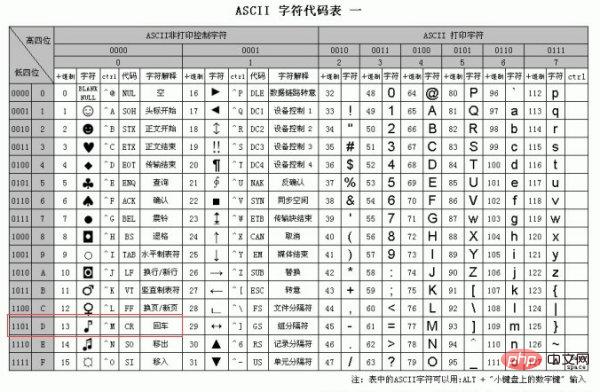
In decimal, the ASCII code of the Enter key is "13"; in binary, the ASCII code of the Enter key is "0000 1101"; in octal, the ASCII code of the Enter key is "15"; hexadecimal Under control, the ASCII code of the Enter key is "0D".

The operating environment of this tutorial: Windows 7 system, Dell G3 computer.
In decimal system, the ASCII code of the Enter key is 13
In addition, in binary, octal, hexadecimal and other common mathematical systems, the ASCII code of the Enter key is:
Bin (binary): 0000 1101;
Oct (octal): 15;
Hex (hexadecimal): 0D;
ASCII The first time it was published as a standardized type was in 1967, and the last update was in 1986. So far, a total of 128 characters have been defined; 33 of them cannot be displayed (some terminals provide extensions so that these characters can be displayed as 8-bit symbols such as smiley faces, playing card tricks, etc.), and most of these 33 characters are obsolete control characters.
The purpose of control characters is mainly to manipulate text that has been processed. In addition to the 33 characters there are 95 displayable characters. The blank characters generated by pressing the space key on the keyboard are also counted as 1 displayable character (displayed as blank).

Extended information:
ASCII codes have certain rules to follow. Just remember the corresponding numerical fields. Common The ASCII code values of the characters are as follows:
The ASCII code value of a space is 32;
The ASCII code values of numbers 0 to 9 are 48 to 57 respectively;
Capital letters " The ASCII code values of A" to "Z" are 65 to 90 respectively;
The ASCII code values of lowercase letters "a" to "z" are 97 to 122 respectively.
For more computer-related knowledge, please visit theFAQcolumn!
The above is the detailed content of What is the ascii code for the enter key?. For more information, please follow other related articles on the PHP Chinese website!